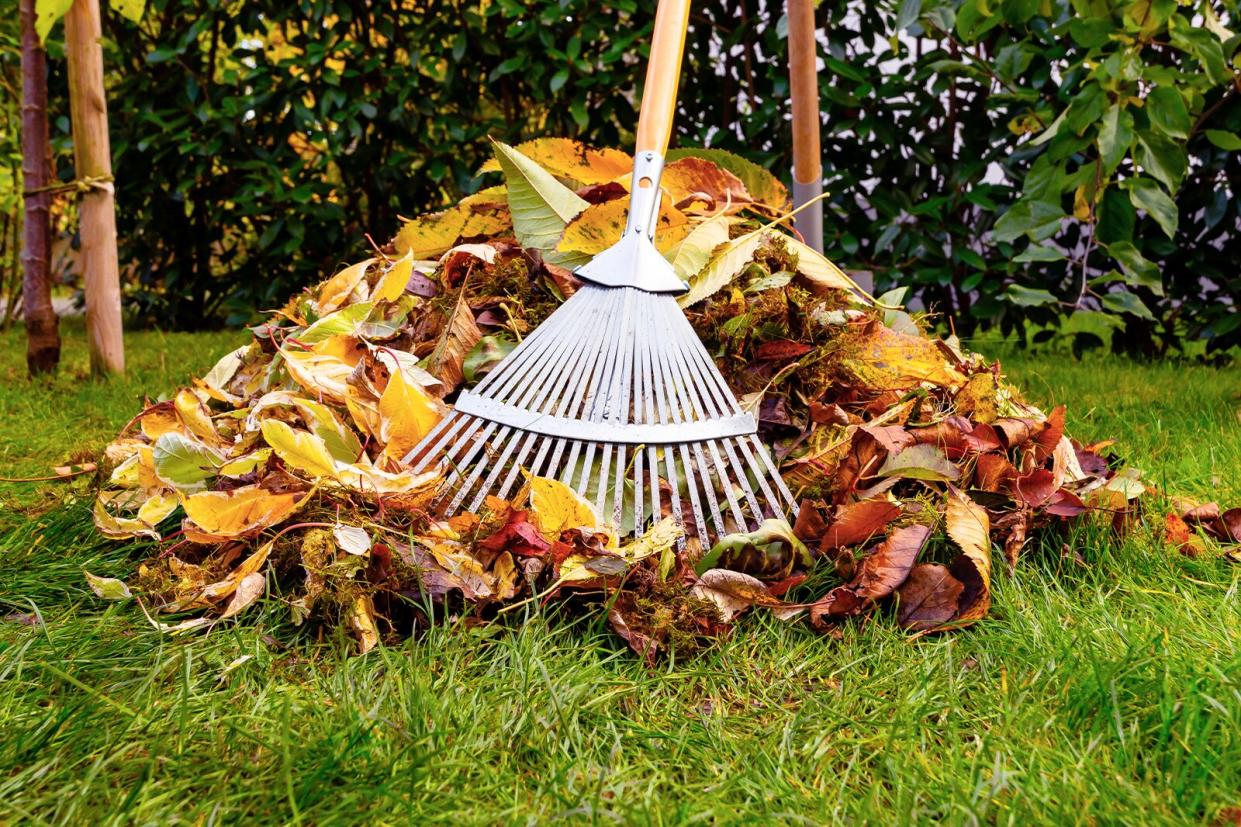What to Do—and What Not to Do—With Dead Leaves in the Fall

Maksym Ponomarenko / Getty Images
Every autumn, we look forward to enjoying the beautiful fall foliage, but the inevitable cleanup that follows once the leaves fall to the ground, not so much. Luckily, experts say that keeping dead leaves around could actually improve your lawn's health.
"While raking leaves is a common practice for aesthetic reasons, it's not always completely necessary, and has its own set of drawbacks," says horticulturist Daniel Cunningham. "While it's true, a deep layer of leaves left across a large lawn area all winter could contribute to reduced air flow and fungal problems, a gentle scattering of leaves is not likely to cause any turfgrass issues."
Here's how to manage dead leaves in the fall, according to the experts.
Related: Fall Lawn Care Tips to Take Your Yard to the Next Level
Don't: Bag Them
First point of advice? Avoid bagging up dead leaves during the fall. "Once the beneficial organic matter and nutrients contained in landscape debris is bagged and set on the curb, those elements can never be recovered," Cunningham says. Plus, this process inevitably sends the leaves to the landfill, which increases waste on the planet.
Do: Mow Over the Leaves
According to Cunningham, the best practice is to mow over fallen leaves every week during the fall—just be sure to leave the bag off of the mower. "This shreds them into finer particles that work their way down into the soil, adding critical organic material which improves soil health," he says. "Over time, these leaf particles are broken down into nutrients by beneficial microbes." In turn, this process will build heat resilience within your plants, as they will develop more robust root systems.
Do: Create Compost
"For those that are inundated with a flood of leaves all at once, they also make the perfect addition to the compost pile," Cunningham says. The best compost piles have an even distribution of green and brown matter. Green matter includes items like old food scraps, and the brown is made of dry leaves and branches. The fallen leaves in your yard have a balanced ratio between carbon and nitrogen, which can boost the health of the compost pile.
Do: Use as Mulch
Cunningham uses the dead leaves from a yard as mulch (the mulched leaves act as a fertilizer) to place around trees, shrubs, and perennial flowers. But mulching too many leaves at once can cause a too-heavy layer of thatch, says Matt Blashaw, a lawn care expert, TV host, and licensed contractor. To ensure just the right amount of mulched leaves, he uses his mulching lawnmower when there is just a light layer of dead leaves across the lawn. The mulched leaves turn into nutrient-rich organic matter, which helps the lawn get through the tough winter and rejuvenate faster come spring, he says.
Using mulch around your plants can also naturally support wildlife. "Many beneficial garden critters use leaf litter as habitat and shelter from extreme weather," says Cunningham. "If fact, many fireflies spend up to 95 percent of their life cycle underneath a layer of leaves. If you want to enjoy their bioluminescence as adults, it's really imperative to leave the leaves."

